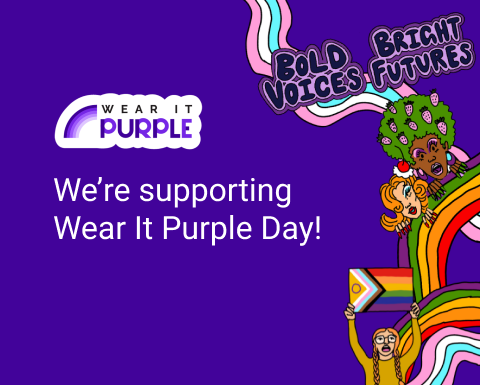- Published
- 28 Aug 2025


We recently took some of our clients on a whirlwind payments tour of London, Dublin, Stockholm and Edinburgh. Accompanying me were my colleagues Rachael Brigham and Zac Andrew and we also took some of our clients Matt Lobdell (Head of Strategy, CUA), Craig McMahon (COO, Teachers Mutual Bank), Chris Thornton (GM Product & Marketing, My State) and Kevin Kehoe (CFO, QTMB) along for the ride.
We learnt a lot about payments and about ourselves on the six-day tour (more than I can share in one blog!) but here are some of our highlights:
1.Incentivising customers to switch
While Australian FIs work to entice new customers, UK institutions are aggressively grabbing customers. Nationwide is attracting new customers by offering a GBP200 bonus payment to bank with them as well as high interest rates (5% on balances up to GBP 2500). Nationwide isn’t the only one snagging customers – Spanish-owned Santander not only offers high interest rates but gives 3% cashback to customers on household bills.
2. Europe’s open data laws could come to Australia
Australia’s recent Productivity Commission report on data access shows that we could be heading down the same path as Europe where 2018 will see the introduction of the Payments Service Directive 2 (PSD2). PSD2 mandates financial institutions to make cardholder data accessible to third-parties. It will mean that the end-user will own their own data and be able to choose who sees and uses this information. This move could be the first in a global shift.
3. Sweden’s cashless society is the way of the future
Sweden is incredibly ahead of the game when it comes to being cashless. Sweden’s average card usage per person puts them ahead of the rest of the world (with an average of 269 transactions per annum per person). A reflection of this shift is Sweden’s minimum age for debit card holders at just seven years of age! With cash payments making up just 20% of retail payments in Sweden compared to the European average of 71% this trend is only likely to continue. Visa Europe’s contactless payments trial at this year’s Eurovision Contest in Stockholm is definitely a sign of things to come.
Nordea, one of Sweden’s big four banks, is using an app-based loyalty program called Wrapp which has an impressive number of registered customers. Sweden also has its own answer to our New Payments Platform (NPP) called Swish. As of May 2016 half the Swedish population were ‘Swishers’. It’s a very useful case study for real-time payments in Australia.
4. Open loop’s potential to reduce cash usage
While the use of contactless is low in the UK compared to Australia, figures for commuters with an Oyster card on Transport for London’s (TfL) Underground paint a different picture. When 33% of Oyster PAYG users have already switched to contactless and over 1 million Visa journeys are conducted every weekday on TfL services, the potential for increasing contactless (and therefore cashless) travel is definitely there. In Australia, as cities move to open loop transport, opportunities for FIs to tap into this pool of contactless commuters means the possibilities to continue to reduce cash usage is huge. For example, could NSW’s Opal card become the next Octopus in Hong Kong? Watch this space.
5. Charities go cashless for spare change
If you’re anything like me you get this creeping sense of guilt when you see a charity collector shaking their tin and you don’t have any change. That’s now been solved. Visa, in conjunction with Save the Children, has developed a contactless handheld donation ‘tin’ in various forms including a face-to-face handheld terminal, a semi-attended desktop terminal and an unattended donation switch.
In Sweden Swish users can ‘swish’ a payment to their preferred charity all without reaching into their pockets.
6. Would you like a home loan with that?
Starting as a joint venture with the Royal Bank of Scotland (RBS) in 1997, Tesco Group bought out RBS in 2008 and today serves more than 7 million customer accounts and had an operating profit of over GBP 160M for 2015-2016.
As of August this year, Tesco Bank now offers its own mobile wallet – PayQwiq. It’s available in London and Edinburgh (so far) and enables users to earn loyalty points with their purchases (5 points for every GBP 4 spent). PayQwiq is in direct competition with leading mobile wallets by allowing shoppers to store their Tesco Clubcard and debit card information and pay up to GBP 250 in a single transaction (AUD$420). Tesco Bank’s formula is clearly working so keep an eye out for Coles and Woolworths replicating its model!
This trip was a whirlwind of four countries and eight flights, and it provided an enormous wealth of information.
It showed me that the Australian market can learn a lot from our European and British counterparts. It also taught me that while our population may be smaller, Australia definitely punches above its weight in terms of payments and should be proud of having one of the largest contactless markets in the world.
The idea that we must be willing to embrace change and payments technology was also reinforced during the trip. While the NPP may not happen overnight it will fundamentally change the way we make payments so we should be ready for it. Also using Sweden’s cashless model as an example we need to take technology in our stride. Change is, after all, as good as a holiday.
By Aaron Blackwell, Account Manager



